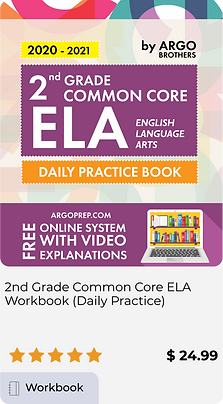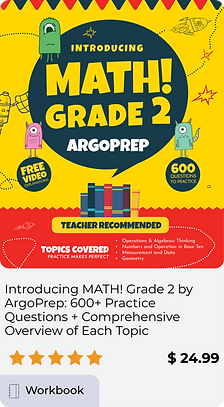.png)

Fourth Grade Common Core Math Standards
With forty-one states adopting the common core curriculum, there is a very good chance your child is following the common core state standards. Below we will provide you a detailed insight into the fourth-grade common core math standards and with valuable resources to help your child succeed in school and at home.
What is Common Core?
This is one of the most frequent questions we get asked by parents and across the board, there is confusion when it comes to the words "common core". Very simply, Common Core is a comprehensive list of standards that students need to know for English Language Arts (ELA) and math from kindergarten to 12th grade.
Who created these common core standards?
Highly qualified teachers and experts all over the United States helped create the framework of what we know today as the common core standards. The main objective of creating these common core standards is so students can develop their critical-thinking skills, analytical skills, and problem-solving skills.
Grade 4 Common Core Math Standards Overview
There are five main topics covered in the fourth-grade common core math standards.
The chart below provides a comprehensive review of the learning standards for fourth grade.
Operations & Algebraic Thinking
Use the four operations with whole numbers to solve problems.
4.OA.A.1
Interpret a multiplication equation as a comparison, e.g., interpret 35 = 5 × 7 as a statement that 35 is 5 times as many as 7 and 7 times as many as 5. Represent verbal statements of multiplicative comparisons as multiplication equations.
4.OA.A.2
Multiply or divide to solve word problems involving multiplicative comparison, e.g., by using drawings and equations with a symbol for the unknown number to represent the problem, distinguishing multiplicative comparison from additive comparison.
4.OA.A.3
Solve multistep word problems posed with whole numbers and having whole-number answers using the four operations, including problems in which remainders must be interpreted. Represent these problems using equations with a letter standing for the unknown quantity. Assess the reasonableness of answers using mental computation and estimation strategies including rounding.
Gain familiarity with factors and multiples.
4.OA.B.4
Find all factor pairs for a whole number in the range 1-100. Recognize that a whole number is a multiple of each of its factors. Determine whether a given whole number in the range 1-100 is a multiple of a given one-digit number. Determine whether a given whole number in the range 1-100 is prime or composite.
Generate and analyze patterns.
4.OA.C.5
Generate a number or shape pattern that follows a given rule. Identify apparent features of the pattern that were not explicit in the rule itself.
Numbers &
Operation in Base Ten
Generalize place value understanding for multi-digit whole numbers.
4.NBT.A.1
Recognize that in a multi-digit whole number, a digit in one place represents ten times what it represents in the place to its right. For example, recognize that 500 ÷ 50 = 10 by applying concepts of place value and division.
4.NBT.A.2
Read and write multi-digit whole numbers using base-ten numerals, number names, and expanded form. Compare two multi-digit numbers based on meanings of the digits in each place, using >, =, and < symbols to record the results of comparisons.
4.NBT.A.3
Use place value understanding to round multi-digit whole numbers to any place.
Use place value understanding and properties of operations to perform multi-digit arithmetic.
4.NBT.B.4
Fluently add and subtract multi-digit whole numbers using the standard algorithm.
4.NBT.B.5
Multiply a whole number of up to four digits by a one-digit whole number, and multiply two two-digit numbers, using strategies based on place value and the properties of operations. Illustrate and explain the calculation by using equations, rectangular arrays, and/or area models.
4.NBT.B.6
Find whole-number quotients and remainders with up to four-digit dividends and one-digit divisors, using strategies based on place value, the properties of operations, and/or the relationship between multiplication and division. Illustrate and explain the calculation by using equations, rectangular arrays, and/or area models.
Numbers &
Operation - Fractions
Extend understanding of fraction equivalence and ordering.
4.NF.A.1
Explain why a fraction a/b is equivalent to a fraction (n × a)/(n × b) by using visual fraction models, with attention to how the number and size of the parts differ even though the two fractions themselves are the same size. Use this principle to recognize and generate equivalent fractions.
4.NF.A.2
Compare two fractions with different numerators and different denominators, e.g., by creating common denominators or numerators, or by comparing to a benchmark fraction such as 1/2. Recognize that comparisons are valid only when the two fractions refer to the same whole. Record the results of comparisons with symbols >, =, or <, and justify the conclusions, e.g., by using a visual fraction model.
Build fractions from unit fractions.
4.NF.B.3
Understand a fraction a/b with a > 1 as a sum of fractions 1/b.
4.NF.B.4
Apply and extend previous understandings of multiplication to multiply a fraction by a whole number.
Understand decimal notation for fractions, and compare decimal fractions.
4.NF.C.5
Express a fraction with denominator 10 as an equivalent fraction with denominator 100, and use this technique to add two fractions with respective denominators 10 and 100.
4.NF.C.6
Use decimal notation for fractions with denominators 10 or 100.
4.NF.C.7
Compare two decimals to hundredths by reasoning about their size. Recognize that comparisons are valid only when the two decimals refer to the same whole. Record the results of comparisons with the symbols >, =, or <, and justify the conclusions, e.g., by using a visual model.
Measurement & Data
Solve problems involving measurement and conversion of measurements.
4.MD.A.1
Know relative sizes of measurement units within one system of units including km, m, cm; kg, g; lb, oz.; l, ml; hr, min, sec. Within a single system of measurement, express measurements in a larger unit in terms of a smaller unit. Record measurement equivalents in a two-column table.
4.MD.A.2
Use the four operations to solve word problems involving distances, intervals of time, liquid volumes, masses of objects, and money, including problems involving simple fractions or decimals, and problems that require expressing measurements given in a larger unit in terms of a smaller unit. Represent measurement quantities using diagrams such as number line diagrams that feature a measurement scale.
4.MD.A.3
Apply the area and perimeter formulas for rectangles in real-world and mathematical problems.
Represent and interpret data.
4.MD.B.4
Make a line plot to display a data set of measurements in fractions of a unit (1/2, 1/4, 1/8). Solve problems involving addition and subtraction of fractions by using information presented in line plots.
Geometric measurement: understand concepts of angle and measure angles.
4.MD.C.5
Recognize angles as geometric shapes that are formed wherever two rays share a common endpoint, and understand concepts of angle measurement:
4.MD.C.6
Measure angles in whole-number degrees using a protractor. Sketch angles of specified measure.
4.MD.C.7
Recognize angle measure as additive. When an angle is decomposed into non-overlapping parts, the angle measure of the whole is the sum of the angle measures of the parts. Solve addition and subtraction problems to find unknown angles on a diagram in real world and mathematical problems, e.g., by using an equation with a symbol for the unknown angle measure.
Geometry
Draw and identify lines and angles, and classify shapes by properties of their lines and angles.
4.G.A.1
Draw points, lines, line segments, rays, angles (right, acute, obtuse), and perpendicular and parallel lines. Identify these in two-dimensional figures.
4.G.A.2
Classify two-dimensional figures based on the presence or absence of parallel or perpendicular lines, or the presence or absence of angles of a specified size. Recognize right triangles as a category, and identify right triangles.
4.G.A.3
Recognize a line of symmetry for a two-dimensional figure as a line across the figure such that the figure can be folded along the line into matching parts. Identify line-symmetric figures and draw lines of symmetry.
*The fourth-grade common core math standards were created by the NGA Center for Best Practices (NGA Center) and the Council of Chief State School Officers (CCSSO). NGA Center/CCSSO is not affiliated with CommonCoreMath by ArgoPrep nor do they endorse any ArgoPrep products or programs.
4th-Grade Curriculum
Now that we understand the five main topics covered in fourth-grade math (Operations & Algebraic Thinking, Numbers & Operations in Base Ten, Numbers & Operations - Fractions, Measurement & Data, and Geometry), let's review in more detail what students are expected to learn throughout the year.

Operations and Algebraic Thinking
In the fourth-grade, students continue to grasp the attributes of the operations of whole numbers. Students will encounter real-world related word problems that require them to use operations such as addition, subtraction, multiplication, and division.
Prime and composite numbers are also introduced at this grade level. Students are required to understand that prime numbers have only 2 factors (1 and the number itself), while composite numbers have more than two factors.
(Example) 5 is a prime number because the factors are only 1 and 5.
12 is a composite number because the factors are 1,2,3,4,6,12.
Finding factor pairs help the students further understand division as they learn about the factors and divisibility rules.
Finding factor pairs help the students further understand division as they learn about the factors and divisibility rules.
Divisibility rules are extremely helpful for so below we will quickly outline the divisibility rules students should know. For a more in-depth overview of these rules, be sure to check out our divisibility rules page.
Quick Divisibility Rules
-
A number is divisible by 2 if the ending number is even (0,2,4,6,8).
(Example) The number 176 is divisible by 2 because the ending number is 6 and 6 is even. -
A number is divisible by 3 if the sum of the digits is a multiple of 3.
(Example) The number 1,035 is divisible by 3 because the sum is (1+0+3+5=6) and the sum 6 is a multiple of 3. -
A number is divisible by 4 if the last two digits in the number are a multiple of 4 or if the last two digits are 00.
(Example) The number 5,016 is divisible by 4 because the last two digits 16, is a multiple of 4. -
A number is divisible by 5 if the number ends in 0 or 5.
(Example) The number 7,865 is divisible by 5 because the end number is 5. -
A number is divisible by 10 if the number ends in 0.
(Example) The number 7,897,480 is divisible by 10 because the end number is 0.
There are more divisibility rules but these are the highly recommended ones to learn at the fourth-grade level. Learning these simple rules can save a lot of time especially on state exams.
At this grade level, algebraic thinking really starts to kick in. When we think of algebra, we think of variables and algebraic equations. However, at the fourth-grade level students start off by learning building blocks of algebra. One of these learning blocks is patterns.
(Example) Find the next shape.
From the pattern above, it's clear that the next shape will be the hexagon.
Patterns are more or less the basis of algebra. By observing the pattern, students should be able to determine the rules that govern that particular pattern and use the rules to extend or fill in the missing link in the patterns.
(Example) 2, 4, 6, 8, 10,___,____,____.
The above patterns show that the operation model used to form a pattern is the addition of 2 to each number.
2 + 2 = 4 4 + 2 = 6
6 + 2 = 8 8 + 2 = 10
Therefore, the rule of addition will be applied to find the solution.
10 + 2 = 12
12 + 2 = 14
14 + 2 = 16
For more detailed examples for this unit, visit our 4th-grade table of contents page.
If you haven't already done so, be sure to check out our award-winning K-8 Math & ELA program to help boost your child's score and increase confidence.

Numbers & Operations in Base Ten
In the fourth-grade, students continue to understand the topic of place value and work with multi-digit numbers. One of the main fundamentals tested in this unit is if students are able to recognize that a digit in one place when working with a multi-digit number represents ten times what it represents in the place to its right.
In addition, students are expected to comfortably compare any multi-digit numbers using the comparison symbols >, <, and =.
(Example) 995 ≤ 1000 is interpreted as nine hundred and ninety-five which is less that one thousand.
.png)
.png)
.png)
.png)
.png)